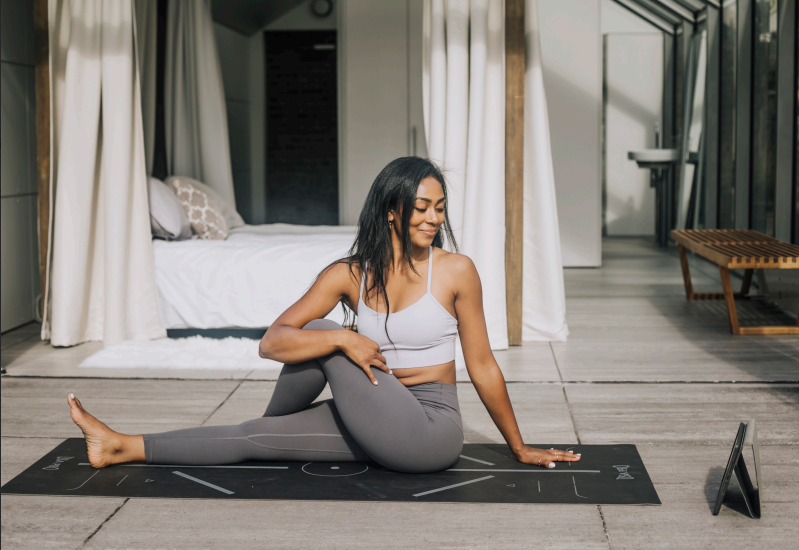The Power of Home Workouts
In today’s fast-paced world, the shift towards home workouts has become increasingly popular, primarily due to the numerous advantages they offer. One of the most significant benefits of exercising at home is convenience. Individuals can easily integrate a workout into their day, regardless of their busy schedules. The elimination of travel time to and from gyms means that even the most time-strapped individuals can manage to carve out moments for fitness. Whether it is a quick 20-minute yoga session or a more intense cardio routine, it can all be executed within the comforts of home.
Comfort is another compelling reason that resonates with many who choose home workouts. In a private environment, individuals can wear whatever they feel most comfortable in, move freely, and focus entirely on their fitness goals without feeling self-conscious. This private setting provides a sense of security for many, enabling them to push their limits and explore various workout programs without the worry of judgment.
Furthermore, home workouts cater to a broad spectrum of demographics, making them accessible to new parents, busy professionals, and those with limited mobility. For instance, new parents may find it difficult to leave the house for gym sessions. In contrast, workout programs available online can be accessed at any moment, allowing them to squeeze in fitness during nap times. Similarly, working professionals can utilize breaks throughout their day for short, effective routines. Additionally, people with limited mobility can explore gentle workouts specifically designed to accommodate their needs, enabling them to enhance their overall well-being within a safe space.
Ultimately, the allure of home workouts lies in their adaptability and the unique blend of convenience, comfort, and privacy they provide, making fitness more achievable for everyone.
Getting Started with TV Yoga
Integrating TV yoga into your workout routine can be an accessible and flexible way to enhance your physical and mental well-being. TV yoga, available through various platforms such as streaming services and cable channels, offers a range of programs tailored to different skill levels, goals, and time commitments. This accessibility allows individuals not only to practice yoga in the comfort of their homes but also to explore a diverse array of styles and instructors.
When selecting the right TV yoga program, it is crucial to consider your current skill level. Beginners might benefit from shows that emphasize foundational poses and breathing techniques, while intermediate and advanced practitioners can explore more challenging series that incorporate intricate flows and sequences. Additionally, defining your goals—whether it is improved flexibility, strength building, or stress relief—will aid you in finding a program that aligns with your objectives. Programs often specify their durations, so you can choose sessions that fit into your schedule, whether you have just 20 minutes or an hour to dedicate to your workout.
The physical benefits of yoga are well-documented; regular practice can improve flexibility, strength, and posture. However, the mental wellness aspects are equally significant. Engaging in yoga can lead to reduced stress levels and an enhanced sense of calm, making it an ideal addition to any workout routine. For those starting their journey with TV yoga, motivation and consistency are crucial. Setting specific days and times for your sessions, creating a comfortable practice space, and keeping a journal to track your progress can foster a dedicated routine that keeps you engaged.
Ultimately, embracing TV yoga within your workout regimen can yield profound benefits, paving the way for a balanced and healthy lifestyle.
Exploring Workout Programs on Television
Television has become an integral platform for promoting various workout programs that cater to a broad audience interested in improving their fitness levels from home. Among these programs, high-intensity interval training (HIIT) has gained immense popularity due to its effectiveness in fostering physical endurance and fat loss in a relatively short duration. Many viewers find that these quick bursts of activity, coupled with rest periods, fit seamlessly into their busy lifestyles.
In addition to HIIT, dance workouts have emerged as a vibrant option, engaging individuals through rhythm and movement. This form of exercise not only provides cardiovascular benefits but also enhances coordination and balance, making it suitable for individuals of all fitness levels. Strength training sessions are another cornerstone of televised workout programs, often led by skilled trainers who guide participants through techniques to build muscle and improve overall body strength.
Notable fitness trainers and influencers present on these programs, such as Jillian Michaels, Beachbody’s Tony Horton, and yoga guru Adriene Mishler, bring unique expertise and engaging methodologies to the screen. Their approachable styles help demystify complex workout moves and encourage inclusivity, enabling viewers to participate regardless of their previous experience. Whether the objective is to tone muscles, increase flexibility, or boost cardiovascular fitness, there is a program designed to meet various needs.
For those looking to safely engage with these workout routines, it is advisable to pay close attention to the trainers’ demonstrations and modify movements as necessary. Gradually building intensity and ensuring proper form can lead to optimal results while minimizing the risk of injury. With a plethora of options available, anyone can find a televised workout program that not only matches their personal interests but also supports their fitness journey effectively.
Creating a Sustainable Fitness Routine at Home
Establishing a sustainable fitness routine while engaging in TV yoga and other workout programs requires strategic planning and commitment. To begin, it is essential to set realistic goals that align with your current fitness level and lifestyle. Aim for achievable milestones, whether it’s committing to a specific number of workout sessions per week or gradually increasing workout intensity. Such goals provide motivation and serve as benchmarks for tracking your progress.
Progress tracking is vital for maintaining motivation. Utilize tools such as fitness journals or mobile apps that allow you to log your workouts, assess your achievements, and identify areas for improvement. Regularly reviewing your progress can reinvigorate your focus and highlight the benefits of your routine, fostering a sense of accomplishment.
Creating a balanced schedule that incorporates various forms of exercise is another fundamental component of a sustainable fitness plan. Incorporate flexibility workouts, strength training, and cardio to ensure comprehensive fitness benefits. Alternating these workouts prevents monotony and facilitates muscle recovery, ultimately making it easier to stick to your routine.
The physical environment where you work out also plays an essential role. Designate a dedicated workout space at home, which can enhance your focus and motivate you. This area should be free of distractions and equipped with necessary tools, such as yoga mats, resistance bands, or weights, depending on your chosen workout program.
Building a support system, even if virtual, can be beneficial. Engage with family, friends, or online communities who share similar fitness aspirations. This provides accountability and encouragement, making it easier to stay committed to your workout endeavors. Potential obstacles, such as time constraints or lack of motivation, can be addressed through preemptive strategies like scheduling workouts into your calendar or reminding yourself of the reasons behind your health goals.
In conclusion, a sustainable fitness routine using TV yoga and various workout programs involves setting realistic goals, staying organized, cultivating a supportive environment, and being prepared to overcome challenges that may arise.








